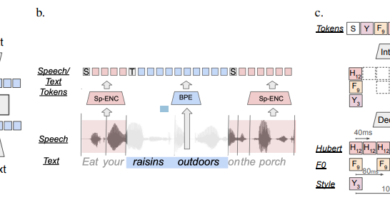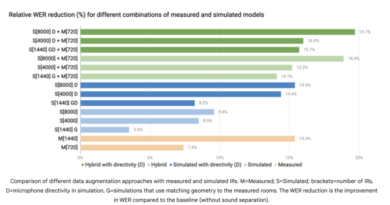A Comprehensive Guide to Train a Food Recognition and Classification Model Using Machine Learning
In today’s digital age, the ability to automatically recognize and classify different types of food from images has become increasingly important. From dietary assessment to food safety and personalized recipe recommendations, machine learning models trained in food recognition and classification can have a wide range of practical applications. In this guide, we will explore the process of training a food recognition and classification model using machine learning techniques, specifically deep learning algorithms.
Introduction to Food Recognition and Classification
Food recognition and classification is a fascinating area of computer vision that focuses on teaching machines to identify and categorize different types of food from images. With the rise of social media and the increasing interest in healthy eating, there is a growing demand for automated systems that can accurately identify and categorize food items.
Deep learning algorithms, such as Convolutional Neural Networks (CNNs), have revolutionized food image classification. Unlike traditional methods that rely on handcrafted features, deep learning models can autonomously discover complex patterns and relationships within food images. By training on large datasets of labeled food images, these models can accurately classify different types of food with high precision. Techniques like transfer learning and data augmentation further enhance the performance and robustness of deep learning-based classifiers, making deep learning the cornerstone of food image classification.
Getting Started: Preparing the Dataset
The first step in training a food recognition and classification model is to prepare the dataset. A well-curated and labeled dataset is crucial for achieving accurate and reliable results.
There are various publicly available food image datasets, such as the Food-101 dataset and the Open Images dataset, that can be used for training. These datasets contain thousands of images belonging to various food categories. It is important to ensure that the dataset is diverse and representative of the food items you want to classify.
Once you have obtained the dataset, it is recommended to split it into training and testing sets. The training set is used to train the model, while the testing set is used to evaluate its performance. A commonly used split is 70% for training and 30% for testing. This ensures that the model is trained on a sufficient amount of data while still having unseen data for evaluation.
Preprocessing the Images
Before training the model, it is essential to preprocess the images. Preprocessing involves resizing the images to a fixed size, converting them to a suitable color format (usually RGB), and normalizing the pixel values.
Resizing the images to a fixed size ensures that all images have the same dimensions, which is necessary for training the model. Commonly used sizes are 224×224 or 299×299 pixels. Converting the images to the RGB color format ensures compatibility with most deep learning models, which expect input images in this format. Normalizing the pixel values often involves scaling the pixel intensities to a range of 0 to 1.
Choosing a Deep Learning Model
Deep learning models, especially Convolutional Neural Networks (CNNs), have shown remarkable performance in food image classification tasks. CNNs are designed to automatically learn hierarchical representations of features from raw pixel data, making them ideal for image classification tasks.
There are several pre-trained CNN models available that have been trained on large-scale image datasets, such as ImageNet. These pre-trained models can be used as a base for food recognition and classification tasks. By leveraging transfer learning, we can take advantage of the pre-trained model’s learned features and fine-tune them on our specific food dataset. This significantly reduces the training time and improves the model’s performance.
Popular pre-trained CNN models for food recognition and classification include MobileNetV2, InceptionV3, and ResNet50. These models have achieved state-of-the-art performance on various image classification benchmarks, including food image datasets.
Implementing the Model
To implement the food recognition and classification model, we will be using TensorFlow, a popular deep learning framework. Here is an overview of the steps involved in implementing the model:
- Import the required libraries: TensorFlow, NumPy, Pandas, Matplotlib, and others.
- Load and preprocess the dataset: Read the dataset and apply preprocessing steps such as resizing, color conversion, and normalization.
- Split the dataset: Divide the dataset into training and testing sets.
- Set up the data generators: Configure image data generators using TensorFlow’s
ImageDataGeneratorclass. These generators will perform data augmentation and preprocessing on the fly during training. - Define the model architecture: Choose a pre-trained CNN model as a base and add additional layers on top for fine-tuning. The number of output classes should correspond to the number of food categories.
- Train the model: Compile the model with appropriate loss function and optimizer, and train it on the training set. Use early stopping to prevent overfitting and monitor the validation loss for performance evaluation.
- Evaluate the model: Evaluate the trained model on the testing set and calculate metrics such as accuracy, precision, and recall.
- Fine-tune and optimize: Experiment with different hyperparameters, architectures, and regularization techniques to further improve the model’s performance.
Applications of Food Recognition and Classification
Food recognition and classification using machine learning algorithms have a wide range of applications. Here are some notable use cases:
Dietary Assessment
Automated food recognition systems can help individuals effortlessly track their daily calorie intake and monitor their nutritional goals. By analyzing food images and estimating their nutritional content, these systems can provide valuable insights for managing one’s health and dietary habits.
Food Safety and Inspection
Automating food safety inspections can significantly improve efficiency and accuracy. Machine learning models can be trained to detect potential contaminants or irregularities in food items, ensuring consumer safety. This can be particularly useful in large-scale food production and distribution facilities.
Personalized Recipe Recommendations
Deep learning algorithms can suggest suitable recipes based on the ingredients present in a food image. This can help individuals discover new culinary options and diversify their cooking repertoire. By simply taking a picture of the ingredients they have on hand, users can receive personalized recipe recommendations tailored to their preferences and dietary restrictions.
Restaurant Menu Analysis
Machine learning models can analyze restaurant menus in real time and provide users with information about allergens, dietary restrictions, and nutritional content. This empowers individuals to make informed dining choices and ensures that their dietary needs are met when visiting restaurants.
Conclusion
Food recognition and classification using machine learning, particularly deep learning algorithms, have immense potential in various domains. From dietary assessment to food safety and personalized recipe recommendations, these models can enhance our ability to understand and interact with food in innovative ways.
With continued research and advancements in deep learning techniques, we can expect further improvements in the performance and scalability of food recognition systems. These systems will continue to play a crucial role in dietary analysis, health monitoring, and food-related applications, ultimately contributing to a healthier and more informed society.
By leveraging the power of machine learning, we can unlock new possibilities in food technology and positively impact our relationship with food.
Also, don’t forget to follow us on LinkedIn. Do join our active AI community on Discord.




